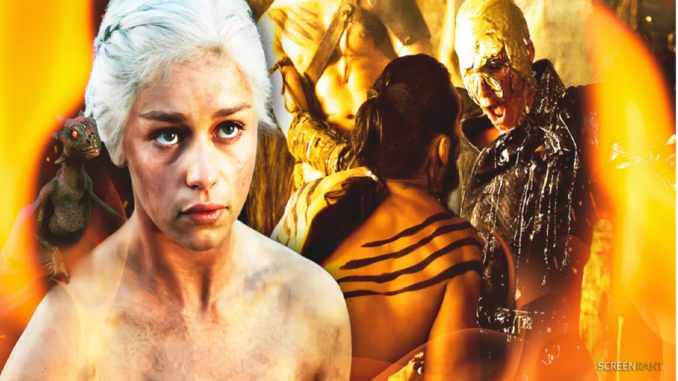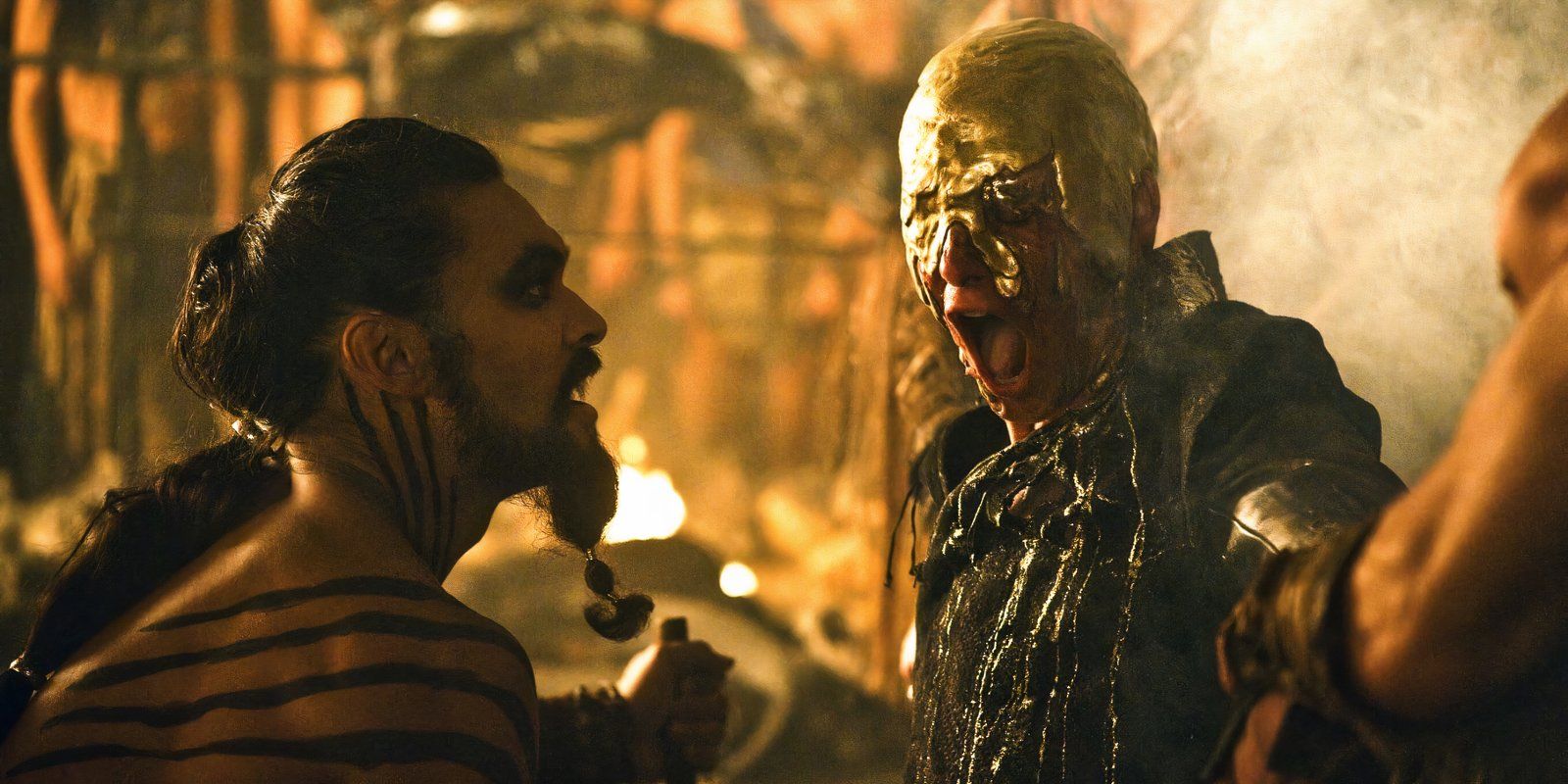
However, there has also long been a point of some confusion regarding Viserys’ death, and it’s because of his sister. Daenerys was named “The Unburnt” for her immunity to fire, emerging from Drogo’s funeral pyre completely unscathed just a few episodes after Viserys himself had been killed. Dany being fireproof would come into play again later in the show, when she killed the Khals in season 6. So why is Daenerys fireproof when Viserys was effectively killed by heat, or fire, and how does it fit with House Targaryen’s history?
Viserys Not Being Fireproof Highlights The Truth About Daenerys’ Immunity To Fire
Game Of Thrones Made This More Complicated
While Daenerys sees Viserys’ death as a sign that he is not a dragon – that he is an unworthy Targaryen, because “fire cannot kill a dragon” – that’s not entirely the case. It’s certainly true that Viserys would’ve been a terrible ruler, very likely another Mad King, and further disgraced the family’s dynasty, but that’s rather in-keeping with their history, really. In truth, Viserys wasn’t fireproof because Targaryens as a whole are not supposed to be fireproof, and that actually includes Daenerys.
When George R.R. Martin had Dany step out of the pyre in A Game of Thrones, it was supposed to be a one-off magical event, thanks to the presence of blood and fire magic. Notably, in the book, Daenerys’ hair is burned off during it. She’s even been burned since, as referenced in A Dance with Dragons after a scene with Drogon in the fighting pit of Meereen, with mention that “her burns were healing.”
Game of Thrones changed this, adding scenes like the aforementioned one where Dany burns the Khals, standing untouched amidst the roaring flames. In doing so, it fueled a misconception that all Targaryens are fireproof (something Martin has been challenging himself since the late-1990s), thus leading to confusion over Viserys’ death. However, that, as well as instances with Jon Snow and deaths in House of the Dragon, underline this is not the case, even in the show’s universe. Many Targaryens are naturally more heat-resistant, but that’s not enough when someone is covering your head in molten metal.
Viserys’ Death Was A Notable First For Game Of Thrones
He Set The Bar For Other Villains Who Followed
That it was such a painful, brutal, and, ultimately, satisfying death only added to it, setting a bar for the rest of the series. Game of Thrones had many similar villains, who were sadistic, cruel, and liked to torment those around them, the biggest of all being Joffrey Baratheon and Ramsay Bolton. Both of them received incredible deaths in the show that paid off long-held wishes for them to die, but the trend started with Viserys – so it’s a good job he wasn’t immune to fire.

